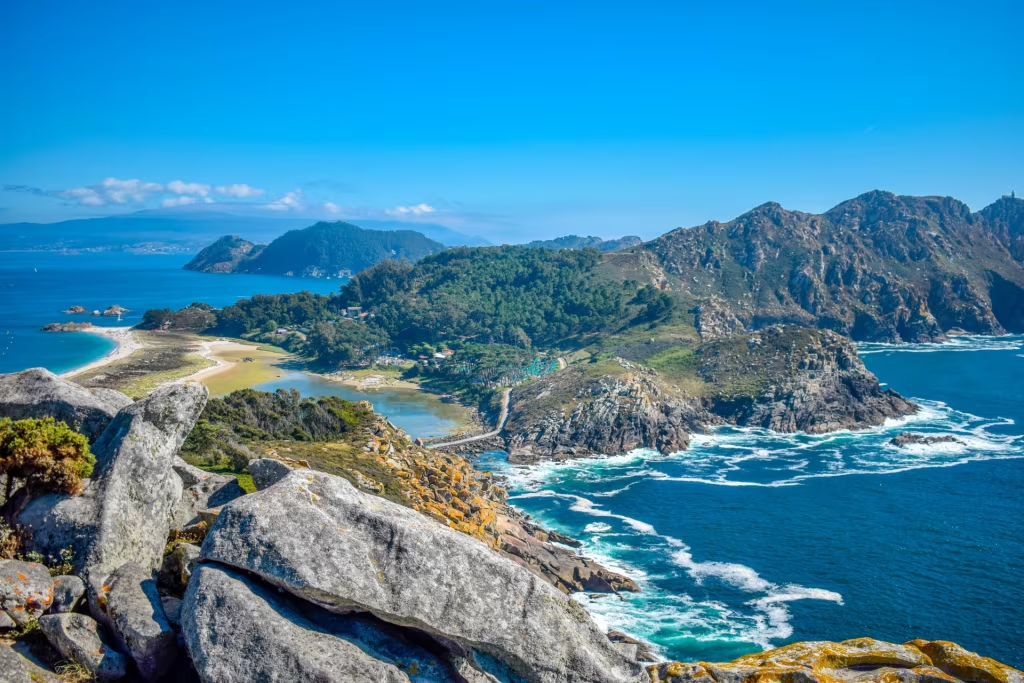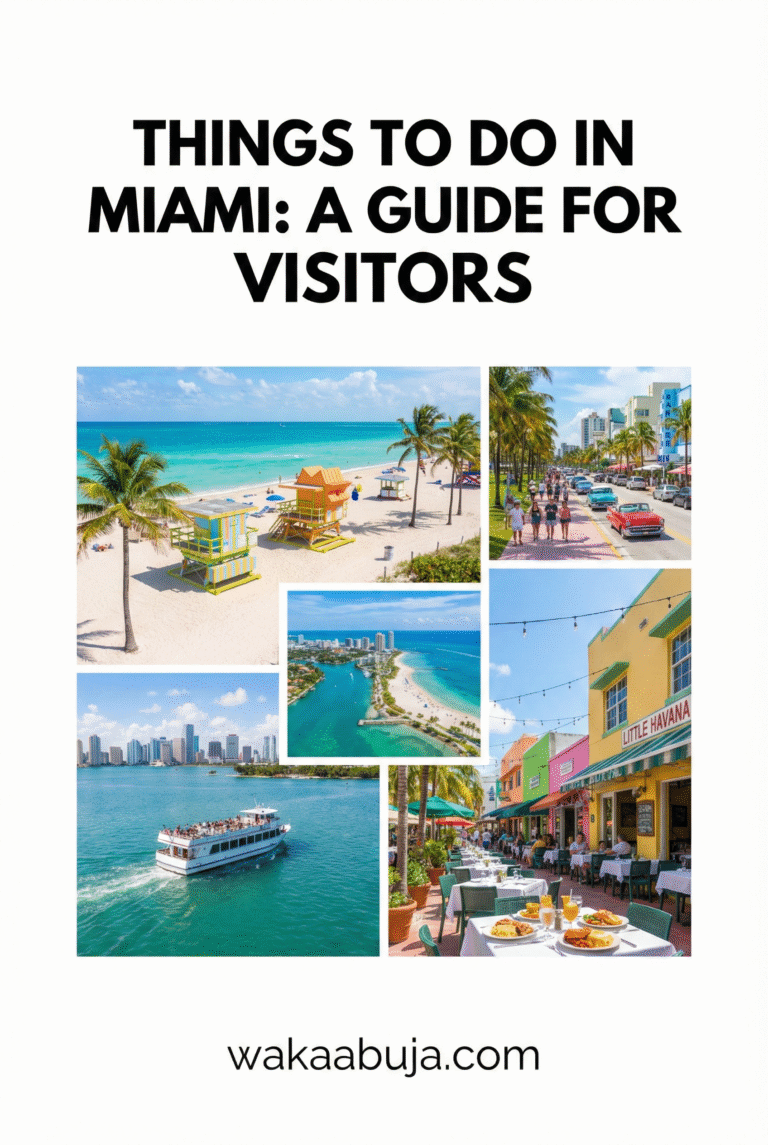TL;DR—Quick Highlights
- Explore historic Casco Vello with its cobblestone streets and vibrant tapas scene.
- Hike up to Monte O Castro for panoramic views and ancient fortress ruins.
- Relax on Playa Samil, Vigo’s largest urban beach with full amenities.
- Take a ferry to the pristine Cíes Islands, a natural park known as the “Galician Caribbean.”
- Discover local flavors at Mercado da Pedra and the famous Oyster Street.
- Use local buses or rent bikes to get around easily; Vigo is compact and walkable.
- Best time to visit: late spring to early fall for pleasant weather and festivals.
- Typical daily budgets range from €70 to €120, depending on accommodation and activities.
- Emergency contacts: police 112, medical emergencies 061, tourist info +34 986 810 260.
Why Visit Vigo? A Local’s Perspective
Having lived in Vigo for several years, I can confidently say this city is an underrated gem on Spain’s northwest coast. It uniquely blends a bustling fishing port’s energy with rich history, spectacular natural beauty, and a lively cultural scene. Whether you’re a history buff, nature lover, or foodie, Vigo offers authentic experiences without the overwhelming crowds of bigger cities.
From wandering the atmospheric old town to savoring freshly shucked oysters by the port, every corner tells a story. The city’s proximity to the Cíes Islands and the Rías Baixas estuaries means adventure is always within reach.
Top Attractions and Must-Do Activities in Vigo
Casco Vello (Old Town)
Start your journey in Vigo’s historic heart, Casco Vello. Its narrow cobbled streets are lined with traditional Galician houses, artisan shops, and cozy cafés. Don’t miss the Co-Cathedral of Santa María, a neoclassical marvel with Romanesque roots. The lively atmosphere here is perfect for tasting local tapas and mingling with locals.
Monte O Castro & Fortress
Climb the steep steps to Monte O Castro for breathtaking views over Vigo’s estuary. Explore the 17th-century fortress ruins and ancient Castro culture settlements. Pro tip: Visit the underground tunnels with a free guided tour (book ahead at +34 986 810 260).
Playa Samil
Vigo’s largest urban beach, Playa Samil, offers golden sands, promenades, and full amenities like restaurants and bars. It’s ideal for a relaxing afternoon or sunset stroll. Lifeguards are on duty in summer, making it family-friendly.
Cíes Islands National Park
Just a 40-minute ferry ride from Vigo port, the Cíes Islands are a protected natural park with stunning white sand beaches and crystal-clear waters. Hiking trails lead to spectacular viewpoints. Book your ferry tickets early during peak season to secure your spot.
Mercado da Pedra & Oyster Street
For a true taste of Vigo, visit Mercado da Pedra, the lively market where locals buy fresh seafood. Nearby, Calle de las Ostras (Oyster Street) offers freshly shucked oysters and other shellfish straight from the Rías Baixas.
Parque de Castrelos
This expansive park combines beautiful gardens with the Museum of Contemporary Art (MARCO) nearby. It’s perfect for a leisurely walk or picnic, with occasional cultural events and concerts.
How to Get Around Vigo
Vigo’s compact size makes it very walkable, especially around the city center and Casco Vello. For longer distances, the city has an efficient bus network connecting neighborhoods and beaches. Renting a bike or electric scooter is also popular and convenient.
Taxis are readily available, and if you plan day trips to nearby towns or the Cíes Islands, consider booking guided tours or ferry tickets in advance.
Where to Stay in Vigo
Accommodation options range from charming boutique hotels in Casco Vello to modern hotels near the port and beaches. For a local vibe, I recommend staying near the old town or the Alameda area for easy access to restaurants and nightlife.
Budget travelers can find hostels and guesthouses starting around €30 per night, while mid-range hotels typically cost €60–€100. Luxury options are available from €120 upwards.
Typical Costs and Suggested Budget
Accommodation
Hostels: €25–40/night
Mid-range hotels: €60–100/night
Luxury hotels: €120+
Food & Drink
Tapas/snacks: €3–6 each
Casual meals: €10–20
Seafood dinners: €25–40
Transport & Activities
Bus tickets: €1.50–2
Ferry to Cíes Islands: €15–20 round trip
Guided tours: €20–80
A comfortable daily budget for most travelers is around €70–120, balancing accommodation, meals, and a few activities.
Money-Saving Tips
- Book ferries and popular tours online in advance for discounts.
- Eat at local markets and tapas bars instead of touristy restaurants.
- Use public transport or rent a bike instead of taxis.
- Visit free attractions like Monte O Castro park and Casco Vello streets.
- Travel off-peak (spring or early autumn) for better rates and fewer crowds.
When to Go & How to Get There
The best time to visit Vigo is from May to September, when the weather is warm and festivals abound. July and August are peak season, so book accommodations early.
Vigo is accessible by plane via Vigo Airport (VGO), with connections to Madrid and Barcelona. The city is also well connected by train and bus to major Spanish cities and just a short drive from the Portuguese border.
Tours and Day Trips from Vigo
Popular tours include full-day excursions to Santiago de Compostela, private wine tours in the Albariño region, and boat trips to the Cíes Islands. Many companies offer walking tours of Vigo’s historic center and culinary experiences showcasing Galician flavors.
How Long to Stay
I recommend spending at least 3 full days in Vigo to soak in the city’s highlights, enjoy the beach, and take a day trip to the Cíes Islands or Santiago. A week allows a more relaxed pace and exploration of the surrounding Rías Baixas region.
Personal Insights & Pro Tips
- Visit Mirador Olivia for a peaceful sunset spot away from crowds.
- Try a caña (small beer) at Cafetería O’Castro after your hike up Monte O Castro.
- Book the underground tunnels tour at Monte O Castro in advance; it’s free but limited.
- For authentic seafood, avoid restaurants right on the main tourist streets; ask locals for hidden gems.
- Download a local bus app for real-time schedules and route planning.
Emergency Contacts
- Emergency Services (Police, Fire, Ambulance): 112
- Medical Emergencies: 061
- Tourist Information Office: +34 986 810 260
Getting Directions: Vigo City Center Map
Frequently Asked Questions
Is Vigo worth visiting for international travelers?
Absolutely. Vigo offers a unique blend of coastal charm, historic sites, and access to natural wonders like the Cíes Islands, making it a rewarding destination for all types of travelers.
What is the best way to get to the Cíes Islands from Vigo?
The most convenient way is by ferry from Vigo’s port, with several companies offering daily trips, especially in summer. Booking tickets online in advance is recommended to avoid sold-out situations.
How safe is Vigo for tourists?
Vigo is considered very safe for tourists, with low crime rates. Usual travel precautions apply, especially at night or in crowded areas. Emergency services are easily reachable via 112.
What local dishes should I try in Vigo?
Don’t miss Galician seafood specialties, especially fresh oysters, octopus (pulpo a la gallega), and empanadas. Mercado da Pedra and local tapas bars are great places to sample these.
How many days should I spend in Vigo?
A minimum of 3 days is ideal to cover the main attractions and a day trip to the Cíes Islands. A week allows for a more relaxed exploration of the city and surrounding areas.
Final Tip
To truly experience Vigo like a local, take your time exploring beyond the main sights—visit small cafés in Casco Vello, chat with fishermen in Bouzas, and savor a leisurely sunset at Mirador Olivia. This city rewards curiosity and a slower pace.




